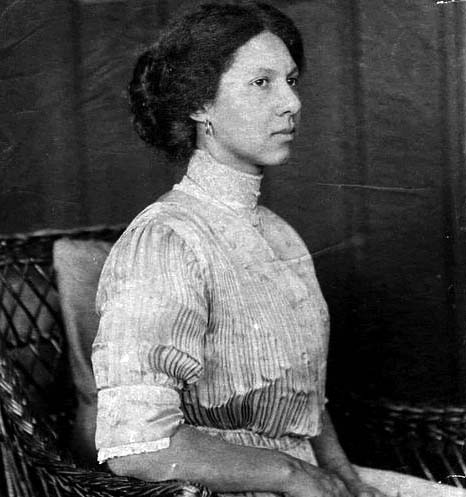
When she was born in 1877, Meta Vaux Warrick* was the youngest of four children of parents who were prosperous middle-class African-Americans and lived in Philadelphia, a city which had a long history of Black prosperity and activism by the late 19th century, and also a very active art scene: the famous Pennsylvania Academy of the Arts, which had produced many prominent American artists, was located there. After attending the typical segregated elementary school of the time, she had access to some unusually progressive schools, where she could pursue an early interest in the arts. When she was just a teenager, a wooden sculpture she created at the J. Liberty Tadd School of the Industrial Arts was actually chosen for the school’s exhibit at the Chicago World’s Columbian Exposition of 1893, which would have been a great honor.
When she graduated from high school, Fuller received a scholarship to attend the Pennsylvania Museum and School of Industrial Arts (PMSIA, now the University of the Arts). By this time, many women were taking advantage of such art training if they could afford it, but it was still rather unusual for a Black woman to do so. She excelled, and although her father died unexpectedly in 1897, which had some impact on the family finances, she kept attending the PMSIA, and was even able to continue past her graduation on a scholarship for a post-graduate year, which culminated in a major school prize for a large bas-relief frieze. Her sculpture instructor, impressed with her talent, talked her mother into letting the 18-year old study in Paris for two years. A European art education was still seen as the only way to make it in the art world, and Paris at the end of the 19th century was the place to be—a swirl of exciting new art movements (Impressionism, Symbolism, Art Nouveau, the Aesthetic movement, and post-impressionism all had their “hub” in Paris at the time). Many American artists lived there, including a few African-American artists, including most famously the painter Henry Ossawa Tanner, one of Fuller’s contacts in Europe.
Fuller, now 22, arrived in late 1899, after a few weeks she had spent with friends in London, expecting to be living at the American Girls’ Art Club, which had been founded in 1893 specifically for the large number of affluent young women who were coming from America to study the arts, and which offered hostel-type accommodation. But when the director saw she was Black, she turned Fuller away with the mealy-mouthed argument that the white Southern women at the Club would object to her presence. (Incidentally, more than 20 years later, in 1923, the Harlem Renaissance sculptor Augusta Savage would hear the same argument about Southerners objecting to the presence of a Black woman when her acceptance to the Fontainebleau School of Art was rescinded.) Fuller ended up renting a room in a small residential hotel and later an apartment, and was clearly undeterred in pursuing her career. She took classes with several sculptors, savvy about saving money by signing up for less expensive classes at the Académie Colarossi (rather than the more prestigious Académie Julian or the École des Beaux Arts, although the latter had finally opened their programs to women in the 1890s), and visited many of Paris’ art museums. Fuller seems to have been quite independent and constantly at work, creating many pieces in clay and plaster. While her professors seem to have functioned as her mentors, she had less contact with the Black painter Henry Ossawa Tanner, a family acquaintance, than some art historians have claimed, and even though she was also eventually introduced to Rodin, whose work she adored, in 1902, he never became her instructor or mentor (another legend that keeps being perpetuated in the literature on Fuller).
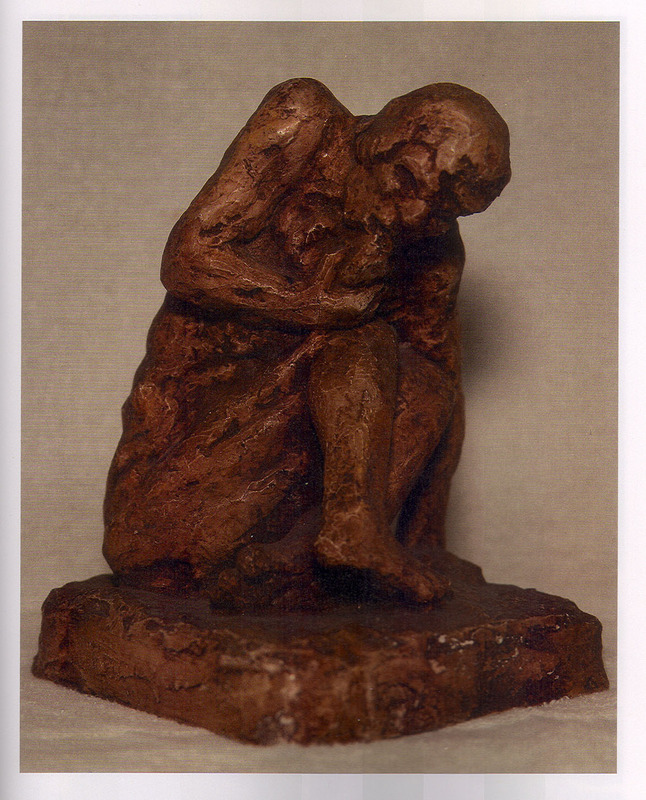
Image credit: Art Diaspora project.
More formative contacts than Tanner or Rodin were actually the Black activists who came for the 1900 Exposition Universelle to create the American Negro Exhibit. This group included W.E.B du Bois and other famous “race men,” as these activists on behalf of Black Americans would have been called then. They gave her the job of restoring miniature dioramas showing the progress of African-Americans that had been damaged in transit, and after her return to the US, several of these activists commissioned public work from her. That said, at the time, she resisted du Bois’ advice to focus on African-American themes in her art–she wanted her art to be universal. Her work from this time period looks very much like she is making teeny Rodins (only a few works are bigger than table-top size). The small scale of her art as well as its emotional intensity and “ghoulishness” made it memorable, and as she started to exhibit her work, it was noted in various newspapers and art magazines. One critic called her “the sculptor of horrors,” and that stuck.
All in all, Fuller showed her sculptures in three Paris exhibitions, most importantly at a solo exhibition in 1902 at the very famous art gallery from which the art nouveau got its name: L’Art Nouveau Bing, where the 22 small plaster sculptures she was showing were noticed by French and American critics alike. In 1903, after she had left to return to Philadelphia when her two years of studying art in Paris were up, the still somewhat prestigious Salon of the Société Nationale, included two of her pieces.
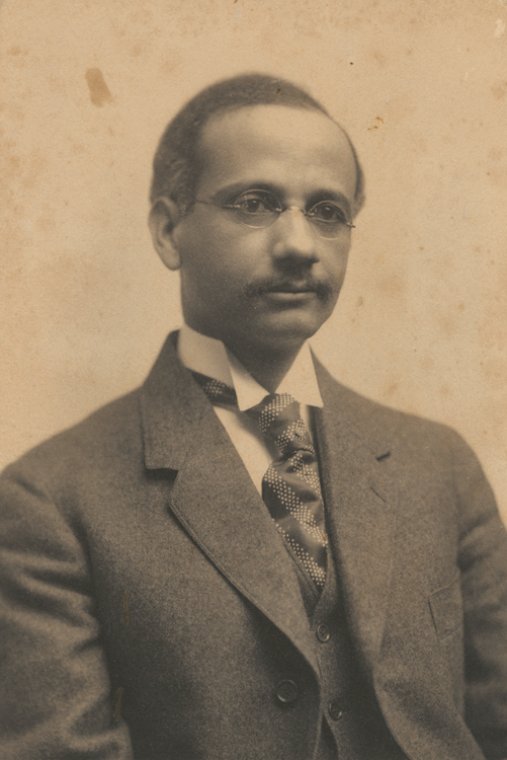
Image Credit: Wikimedia Commons
But when she returned to the States in 1902, this budding fame from Paris led to nothing. She opened a studio in Philadelphia with the help of a relative who had space in a downtown building she could use, but art dealers were not interested in her work—as a woman of color in an increasingly segregated society in which the art world was dominated by white men, she was not getting commissions. She kept at it, though: She took more classes at the PMSIA and also at the Pennsylvania Academy of the Fine Arts, and kept winning prizes and being admitted to juried shows. Her contacts with the Black “race men” paid off: When she finally received a commission in 1907, five years after her return, it was to make 12 dioramas for the Jamestown Tercentennial Exposition, later called the “Warrick Tableaux” (now lost, although there are some photographs). While this likely brought her back to the attention of du Bois and others who later commissioned work for two other expositions, it did not lead to any additional work or fame right away. Instead, she began to be very busy with family matters. Shortly before this first commission, on a visit to Boston, she had met a young Liberian doctor whose parents had emigrated to Africa from the US, Dr. Solomon Fuller (1872-1953), and gotten engaged to him, but, as Renée Ater points out “with the stipulation that she needed a long engagement so that she could continue to develop her artistic career” (Ater 25). But by February 1909, three years into the engagement, Fuller’s career had not advanced, and the couple got married. They moved to Framingham near Boston. Fuller’s husband, one of the first Black men to receive a medical degree in the US, was a pathologist at Westborough State Hospital and after 1919, a member of the faculty at Boston University, where he taught neurology and psychiatry, specializing in research on Alzheimer’s disease. But letters and family memories collected by Fuller’s first biographer, Judith Kerr, make clear that he was also a very traditional and demanding spouse, who expected his wife to be first and foremost a wife and mother.
It is clear that after her marriage, Fuller’s art was put on the backburner, as the couple built their house in Framingham (against the objections of their white neighbors, who petitioned against them), and settled into a fairly conventional marriage. They had three sons in quick succession in the 1910s, and also adopted their 13-year-old niece when Meta Fuller’s older sister Blanche died in 1911. Fuller continued to make art, but clearly less than she wanted and expected–she may have been additionally discouraged by the disaster that struck in 1910, shortly after the birth of her oldest son: A fire broke out in the warehouse where most of her art from the Paris and Philadelphia days was stored, and destroyed her sculptures and tools.
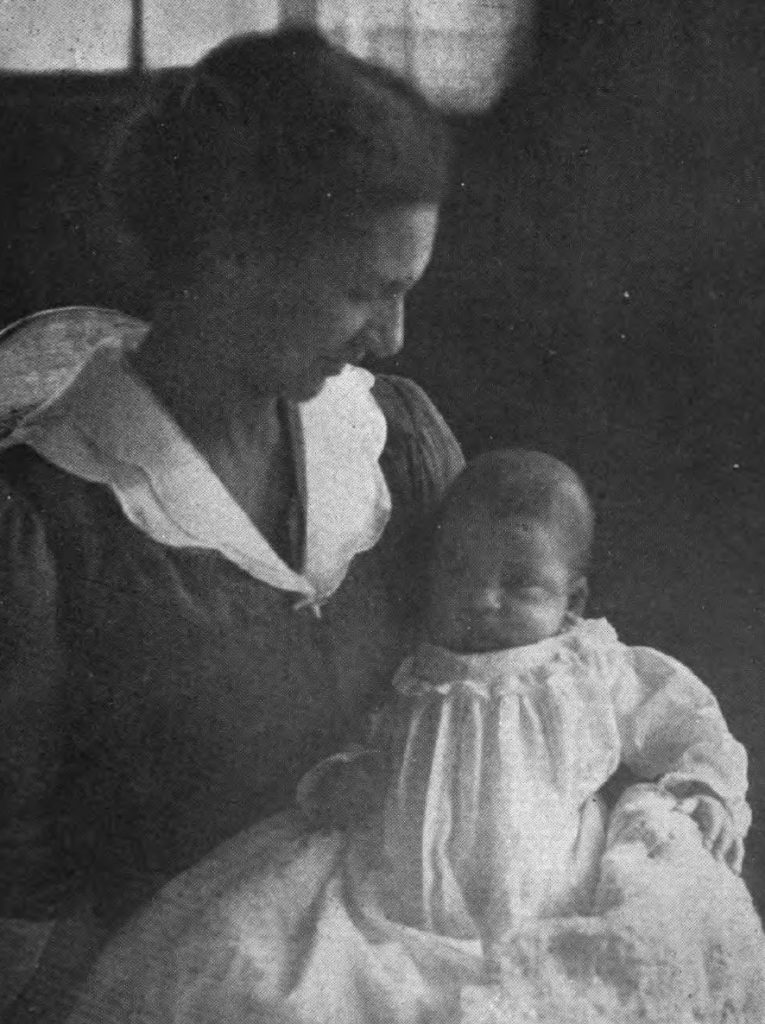
Image source: Benjamin Brawley, The Negro in Literature and Art in the United States (New York: Duffield, 1918), interleaf after p. 111
The years with three small children, initially without any household help and a small studio in the attic, must have been challenging. It is important to understand that not only her environment but Meta Fuller herself would have placed a major emphasis on marriage and motherhood. Her husband was not at all unusual in being quite traditional in his expectations that she would put her family before her art, and the Fullers’ oldest son, Solomon Jr., later told the scholar Kathy Perkins in an interview that his father “often resented his wife’s pursuit of a professional career” and was furious that she had not asked his permission before building a studio on a nearby lot when an inheritance from her maternal grandfather enabled her to replace the small studio in the attic. Although her new studio, where she also worked with several students who later took over the space when she could no longer work there, gave her more space, both studio spaces point to the way she had to push art to the margins of her life much of the time. Of the few photos we have of her, most show her in domestic surroundings, although there are a couple of snapshots of her in her attic studio, which have enabled the Danforth Art Museum in Framingham to recreate it as part of their exhibit of her work.
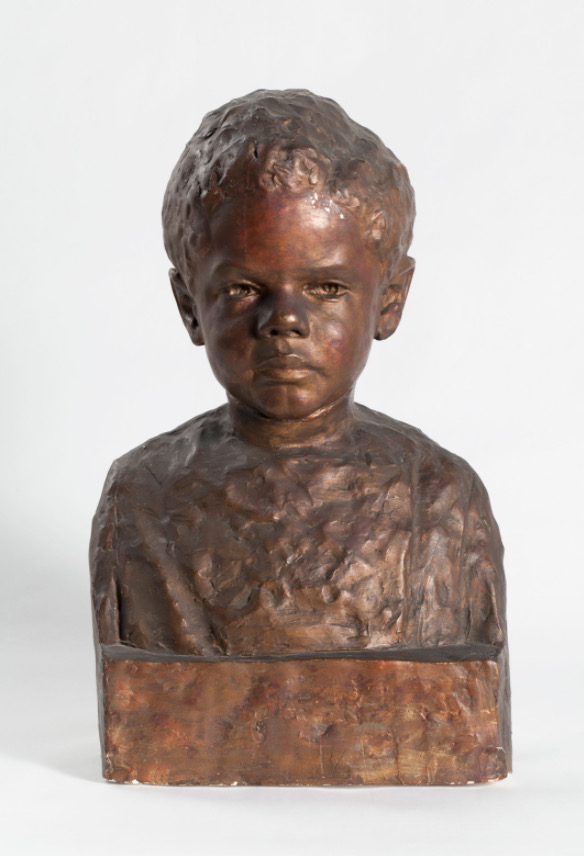
Fuller was not unusual in having to carve out space for her art in this way; women trained as artists around the turn of the 19th century (not to mention those working in many other professions that were also just opening up to women at the time) habitually gave up their career and focused on their families. Fuller was not the only woman whose friends advised against marriage, since only women who remained single (like Mary Cassatt–or the much less famous Edmonia Lewis in the previous generation) seemed to be able to make a career out of their art. But, also like many other women artists of her time, she felt she could not, or did not want to, give up on having a family; maternal figures and interactions between mothers and children play a major role in her art. The pressure to then put husband and children first that she clearly experienced had to do with race and class as much as with gender, since the general social expectation was that making a comfortable home and creating a stable family made a woman was an asset to her community: it signaled her good moral influence on those around her, a respectable social status, and the success of racial “uplift” as a concept all at the same time (see Renee Ater’s book about this important point, pp. 25 and 26).
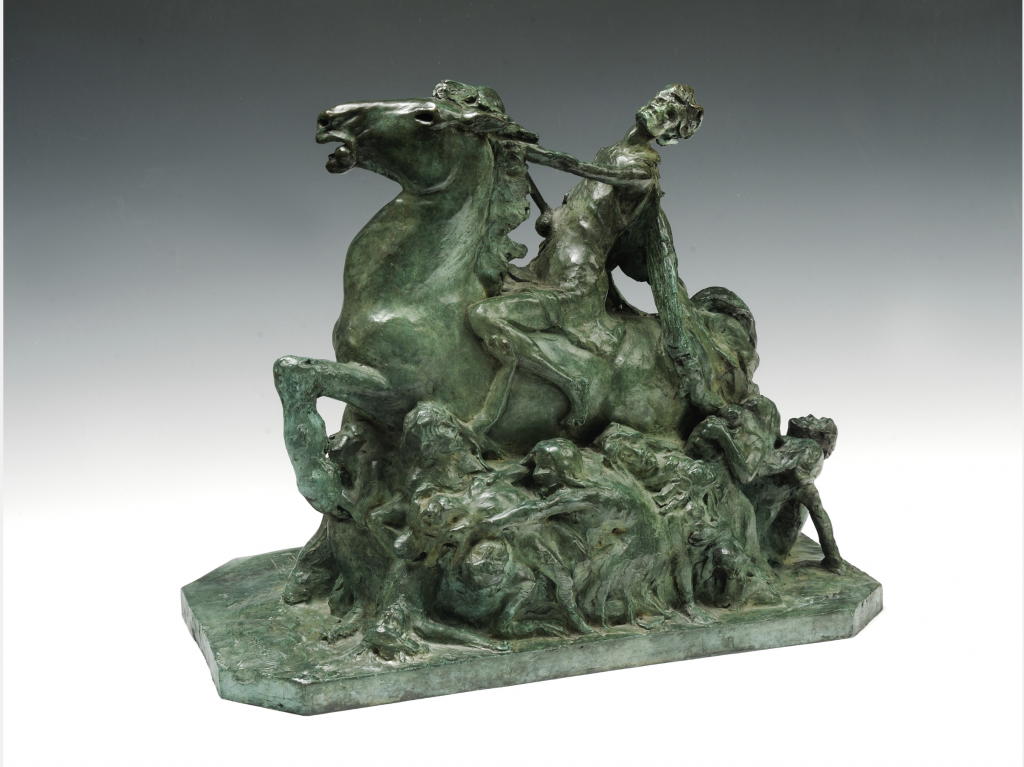
Image Credit: Obelisk Art History Project
In addition to her family duties as social obligation, Fuller was also intensely engaged in Black middle-class community activism in the 1910s and 1920s, which included involvement in suffrage and pacifist organizations, in theatrical productions, and local protests against D.W. Griffith’s notorious racist movie 1915 Birth of a Nation. The fact that Fuller was able to create sculptures intermittently throughout the 1910s, 1920s and 1930s on top of these familial and social obligations is impressive. Many of these were smaller sculptures, some portrait busts of family friends and figures of children, but others, like Peace Halting the Ruthlessness of War from 1917, were powerful scenes with a clear political component (only the “War” part of the sculpture survives; the figure of “Peace” is lost). At her studio, she showed a number of these in a 1914 exhibit that the noted Black activist and writer Benjamin Brawley highlighted in the profile he wrote of her.
But she also produced entries for competitions and exhibitions, and two larger commissioned works that I am discussing in more detail in Three Works. These were a life-size sculpture of Emancipation for the National Emancipation Exposition, intended to celebrate the 50th anniversary of the Emancipation Proclamation in 1913, spearheaded by W.E.B. du Bois and other Black activists, and a figure called Ethiopia Awakening for the “America’s Making Exposition” of 1921 . Her most direct political statement, a small sculpture commemorating a 1981 lynching, called Mary Turner: A Silent Protest against Mob Violence, was never shown in public during her lifetime. (That’s a story for my Three Works page). After Ethiopia Awakening, her last large commission, she created mostly smaller works, even after her children were grown—some are portrait busts, some are religious sculptures, and some could be called genre scenes,. One of the most stunning of these, one of her last large sculptures, is Talking Skull from the late 1930s, based on an African folk tale.
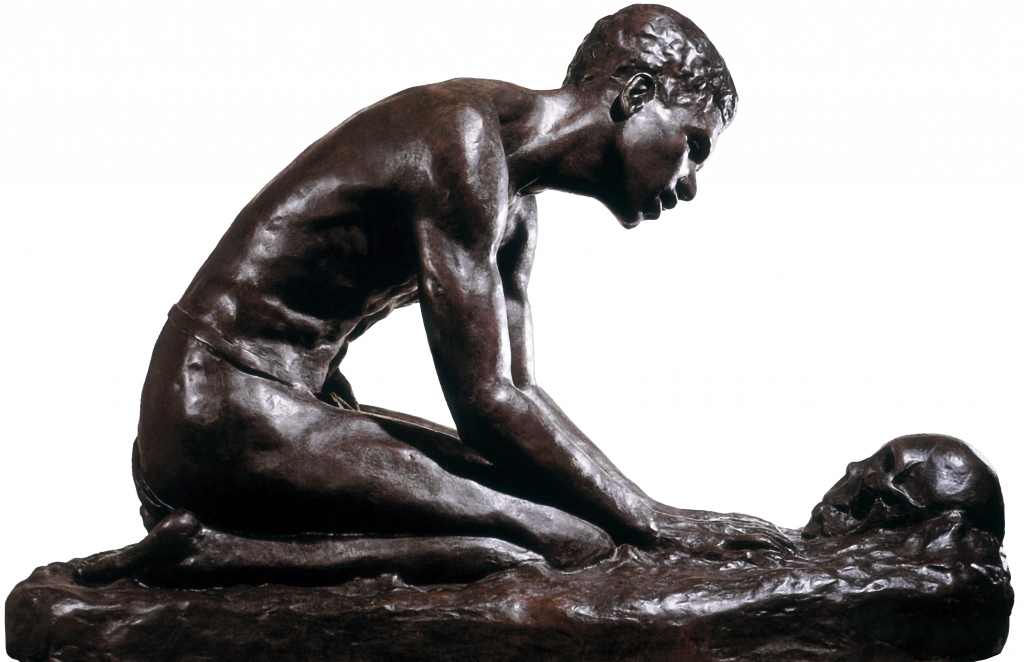
After 1940, when Fuller began to take care full-time of her ailing husband, who had lost his eyesight to diabetes, she all but stopped making art, and even after his death, she only occasionally sculpted, although she did begin to write poetry. When she died in 1968, she was 91, and most of her limited fame rested on her work from the 1910s and 1920s. The most celebrated piece was her Ethiopia Awakening, noted by art historians with an interest in Black art as a harbinger of the Harlem Renaissance, because the famous Black scholar Alain Locke in his 1925 anthology The New Negro had interpreted it as such. But he did so in ways that very likely distorted her own ideas about the sculpture, and incorrectly dated the work to the 1910s, which made her look like more of a forerunner of the Harlem Renaissance artists and less like their contemporary. But other works were mostly forgotten until fairly recently. One of the important questions that remain to be answered by scholars is why her smaller, less overtly public (but sometimes no less political) sculptures got ignored, and what role the complex intersectionality of gender and race plays in this.
I will leave you with this thought: I am very much aware of the fact that my blog on Fuller’s work (and its relationship to Edmonia Lewis’) reinforces the bias in favor of the three pieces that are most talked about, or most canonical: Emancipation (1913), Mary Turner: A Silent Protest Against Mob Violence (1919) and Ethiopia Awakening (1921)–just as I foreground the most famous pieces by Lewis on this website. But I invite you to mull over what I am also thinking about a lot these days: what makes the “minor sculptures” minor? What does it have to do with the race of the people who are being portrayed or referenced in the work? What does it have to do with the emphasis on children (Fuller’s portraits of her children, Lewis’ Awake and Asleep babies as well as her putti and cupids), on portraiture in sculpture form, and/or with her works’ generally small size? And to what extent does this relate to such less monumental, less massive, but also thematically less weighty sculptural work being seen as overly or inappropriately feminine? That invites more thinking about why there have historically always been so few female sculptors and especially Black female sculptors–even as Tritobia Hayes Benjamin suggested, Black women born in the 19th century, like Lewis and Fuller, might have seen their opportunity in sculpture precisely because it didn’t require the training in drawing and painting that was not as readily available to them as it was becoming to upper-middle-class white women at the time. These bigger questions about women artists of color and the art form and the medium they choose to work in always sit right behind any closer look at an individual artist like Meta Fuller.
* Note: From here on out, I will call her by her later married name, “Meta Fuller,” throughout, but Warrick was an important family name associated with a white British great-grandfather who married a free-born Black woman in Virginia. The biographical information is mostly summarized from Renée Ater’s book and Judith Kerr’s dissertation on Fuller, but I have also referenced a couple of other sources that you will find in my Resources section.